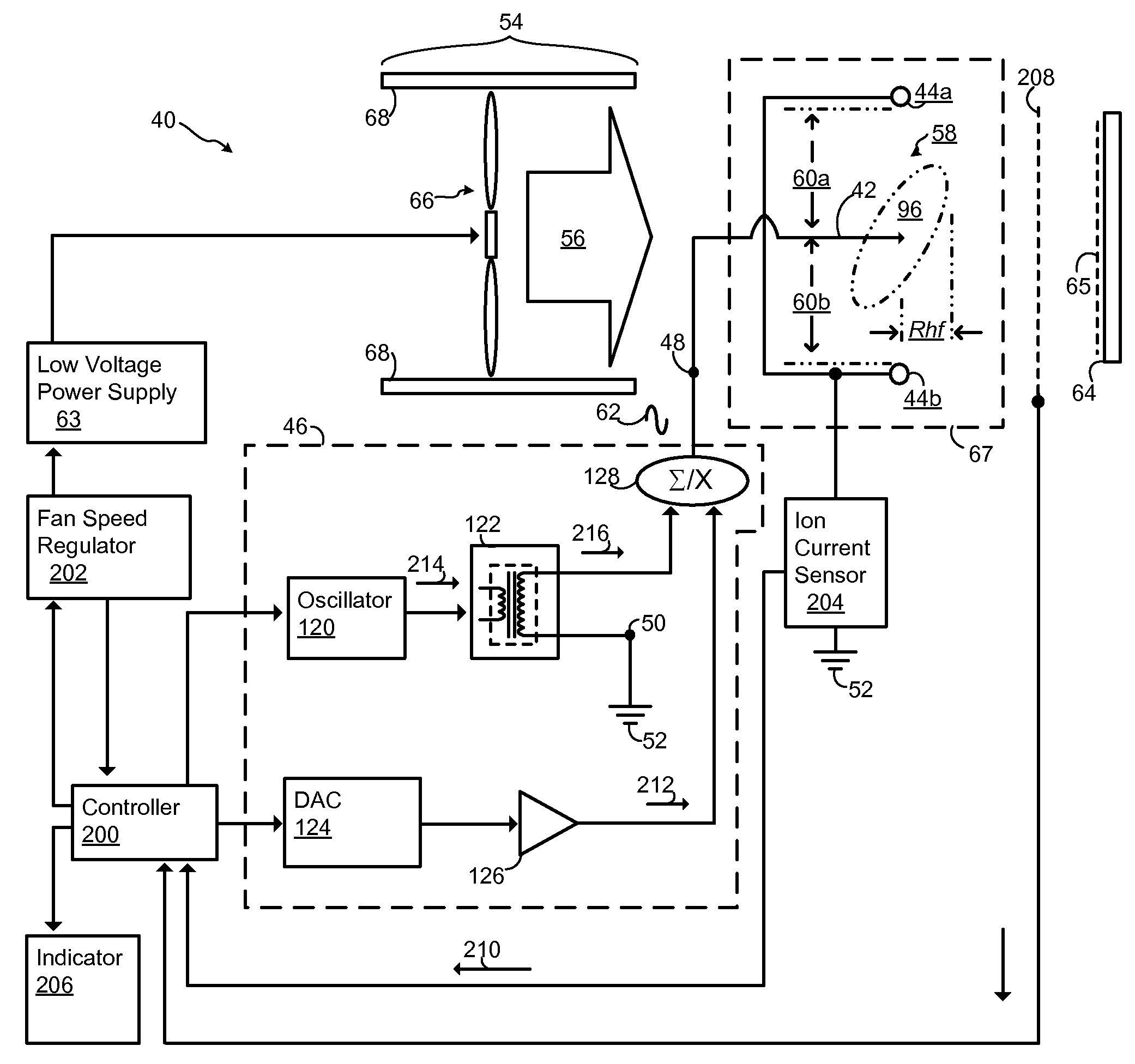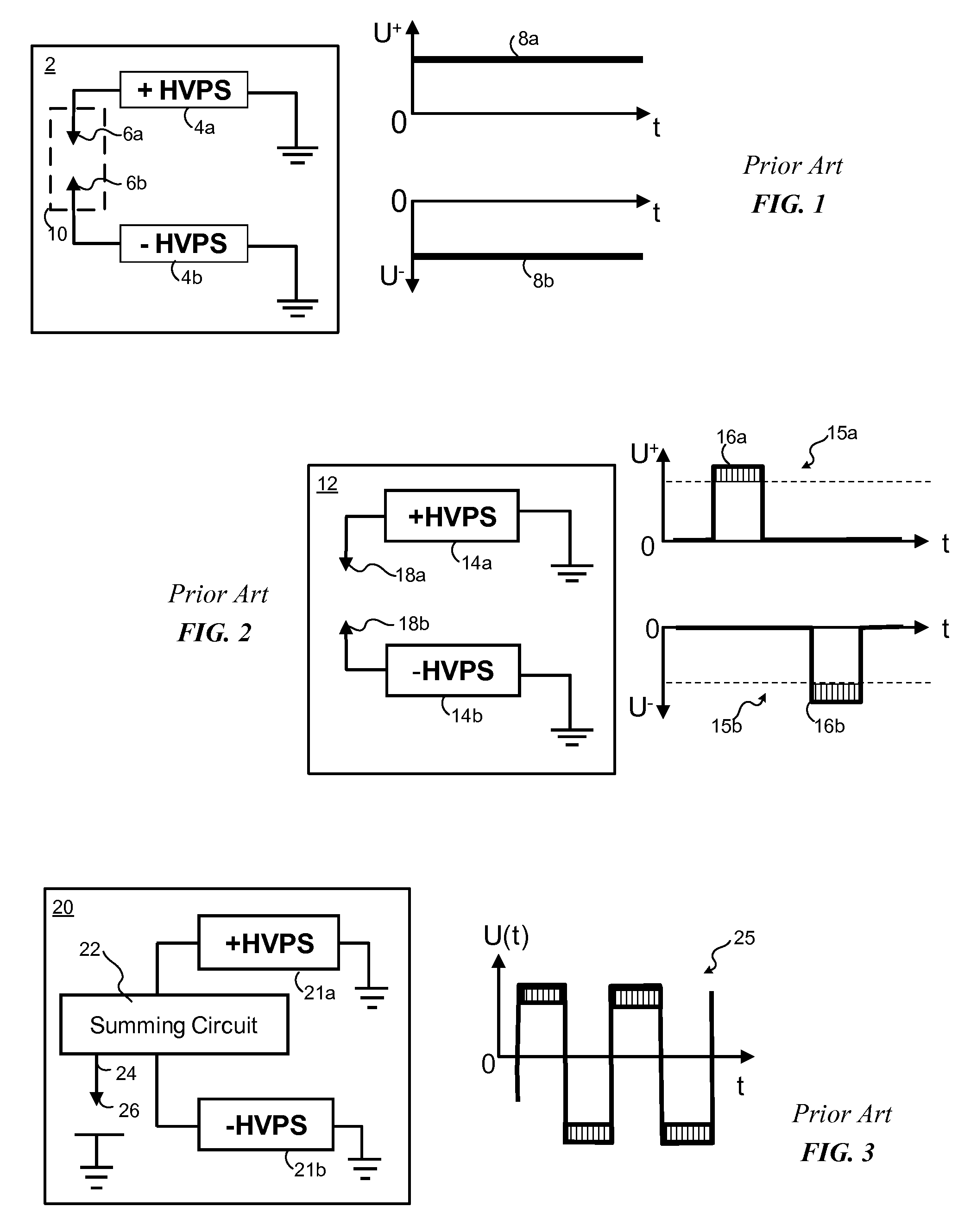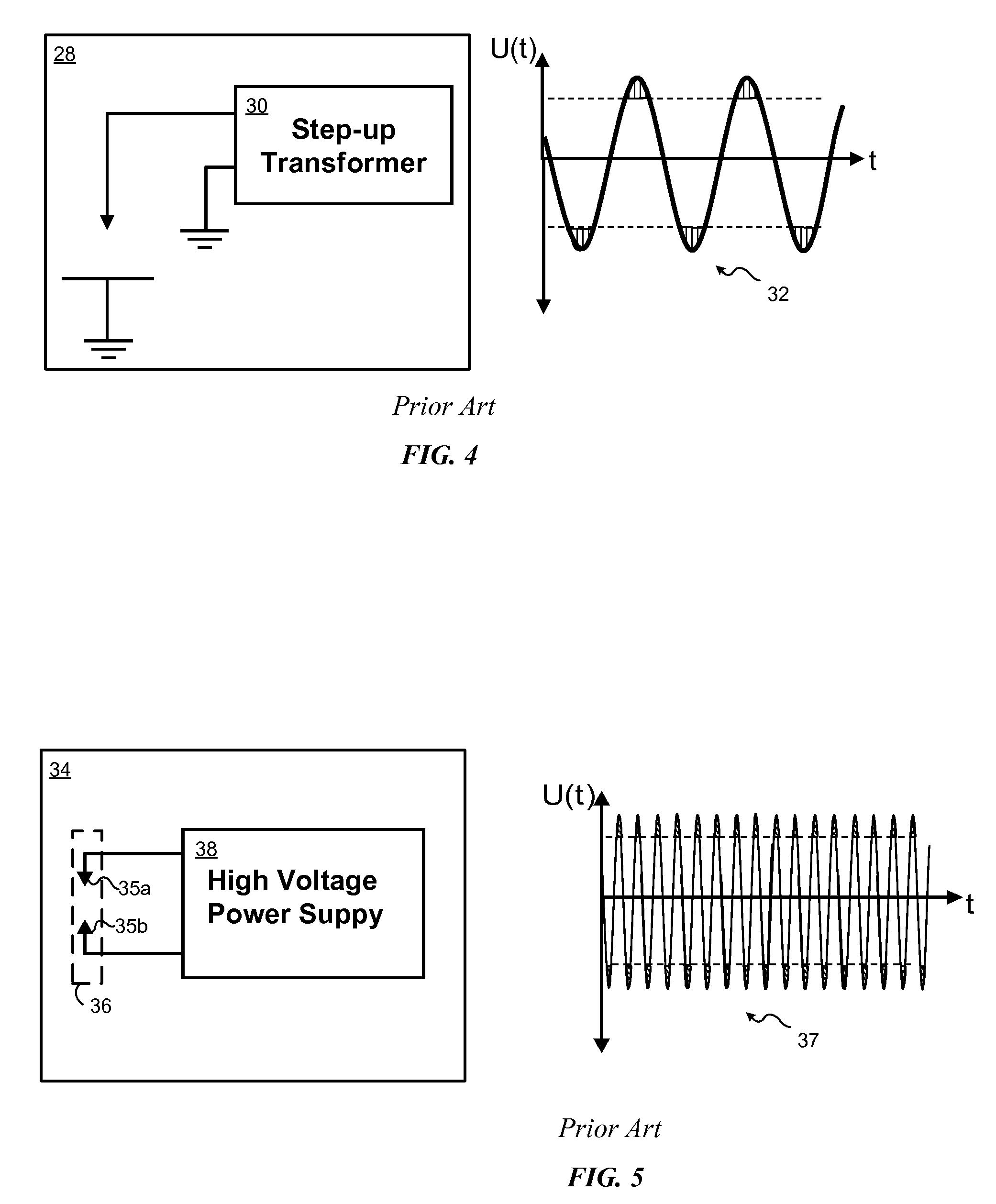Low Maintenance AC Gas Flow Driven Static Neutralizer and Method
a static neutralizer and low-maintenance technology, applied in the field of static neutralizers, can solve the problems of contaminated emitters that exhibit significantly lower efficiency, reduce the performance of ac static neutralizers, and cannot travel far enough to reach the low voltage or reference electrode before the waveform polarity reverses, so as to minimize the probability of contamination particles
- Summary
- Abstract
- Description
- Claims
- Application Information
AI Technical Summary
Benefits of technology
Problems solved by technology
Method used
Image
Examples
Embodiment Construction
[0031]In the following detailed description, for purposes of explanation, numerous specific details are set forth to provide a thorough understanding of the various embodiments of the present invention. Those of ordinary skill in the art will realize that these various embodiments of the present invention are illustrative only and are not intended to be limiting in any way. Other embodiments of the present invention will readily suggest themselves to such skilled persons having benefit of the herein disclosure.
[0032]The present invention establishes a gas flow at a given flow velocity and uses an ionizing voltage waveform that when applied to at least one emitter, helps drive contamination particles away from the emitter(s) and reduces the rate of accumulation of these contamination particles on the emitter(s). When the gas flow passes through a corona discharge region, the gas flow may contain gas borne contamination particles that are affected by the ions generated by corona disch...
PUM
 Login to View More
Login to View More Abstract
Description
Claims
Application Information
 Login to View More
Login to View More - R&D
- Intellectual Property
- Life Sciences
- Materials
- Tech Scout
- Unparalleled Data Quality
- Higher Quality Content
- 60% Fewer Hallucinations
Browse by: Latest US Patents, China's latest patents, Technical Efficacy Thesaurus, Application Domain, Technology Topic, Popular Technical Reports.
© 2025 PatSnap. All rights reserved.Legal|Privacy policy|Modern Slavery Act Transparency Statement|Sitemap|About US| Contact US: help@patsnap.com



